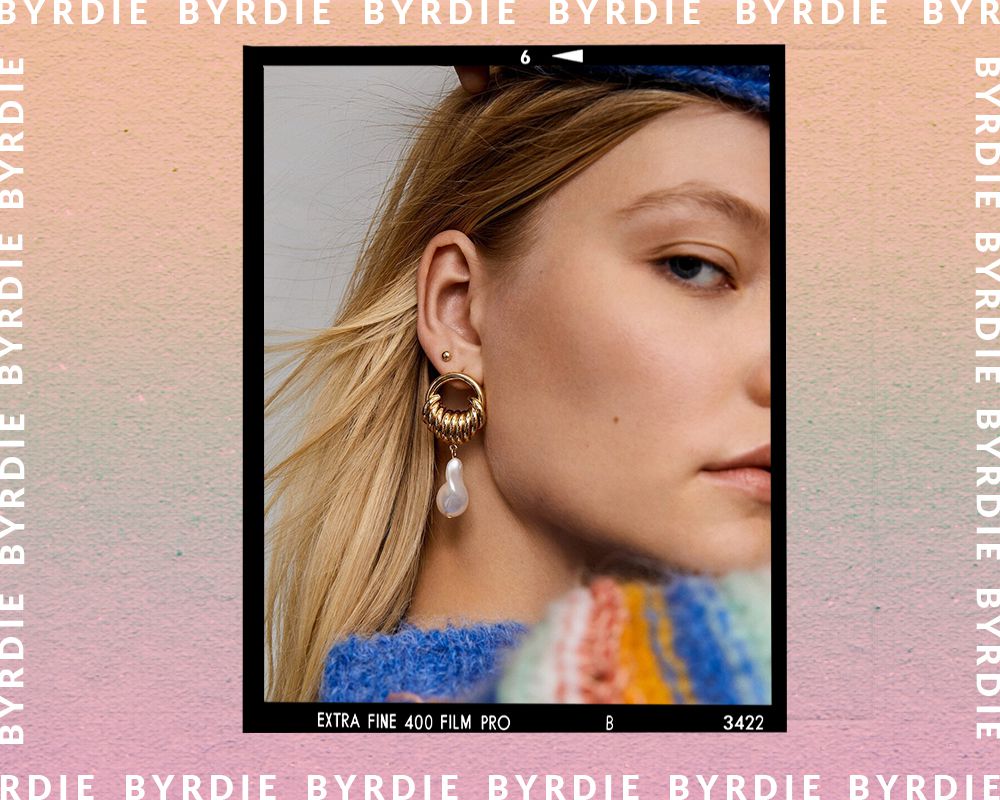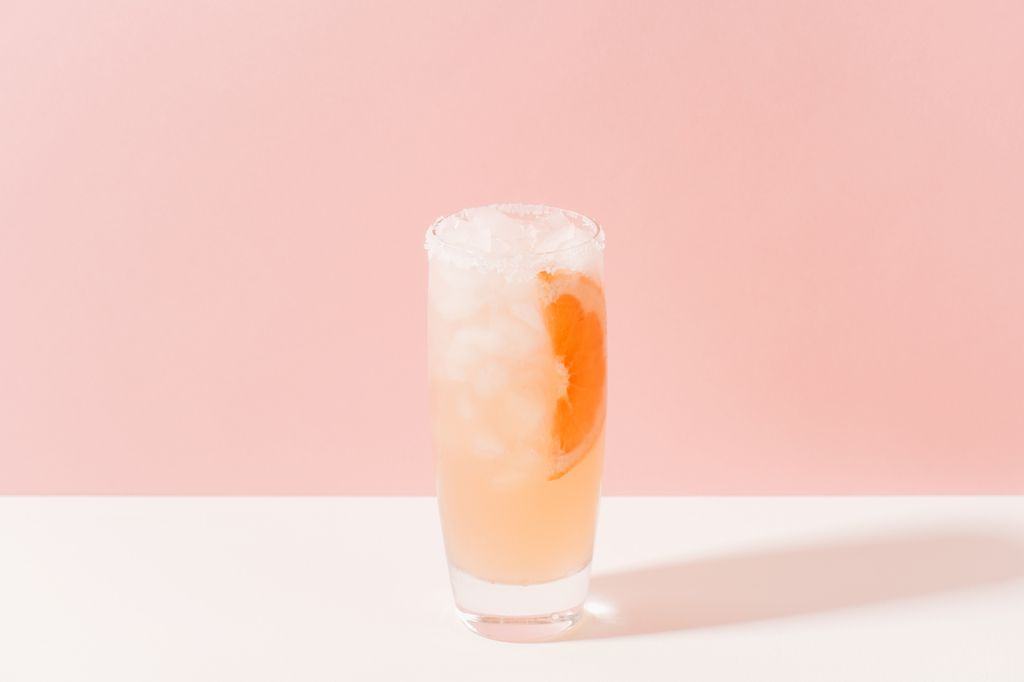What to Know Before Getting a Double Ear Piercing

Getting an ear piercing is always an exciting venture, regardless of whether it’s your first or your fifth. Placement is a big part of what makes the process so thrilling; locations include a range of choices, from the classics—like the upper outer ear—to something edgier, like an industrial piercing.
The earlobe, though, is generally considered a pretty typical place to get a piercing—but that doesn’t mean it’s boring! If you want to stick to the safety of the earlobe but want an exciting piercing, a great option is a double ear piercing. Placing two single piercings next to each other allows for ultimate customization with jewelry and will definitely make more of a statement than a one standalone earring.
If you’re considering a double ear piercing, read on for everything you should know about the versatile body modification.
Double Ear Piercing
Placement: Double ear piercings are most commonly found on the earlobe, but can be placed anywhere on the ear.
Pricing: $25-$50 per piercing, though some studios will charge separately for jewelry.
Pain level: “I’d rate it as a three out of 10,” says Workman.
Healing time: 6-8 weeks
Aftercare: Clean both piercing holes twice per day with a sterile saline solution, careful not to snag the piercings on anything to avoid irritation.
What is a Double Ear Piercing?
A double ear piercing is two consecutive single piercings placed adjacent to each other on the lower part of the earlobe. Often, double ear piercings are done one at a time—that is, a single ear piercing is done and then the second is done much later. However, recent trends have made getting two piercings at once quite popular (and it saves time by not making you come in twice).
The way that a double ear piercing works is exactly how a single one works, just times two. First, the front and back of the area are cleaned, then the lobe is marked where the two piercings will be placed. When it comes down to the actual piercing, your piercer may use a clamp to pull the cartilage taut or decide to do it freehand—whichever is more comfortable to them. Regardless, the needle is then pushed through the ear to create a hole that is then sealed by pushing the jewelry through and into place. Then, the process is repeated for the second hole.
Pain and Healing Time
While all piercings are painful, exactly how much pain you’ll be in is up to your pain tolerance, which is completely subjective. What may feel like a 10 on the pain scale to one person may feel like a two to someone else. Plus, if you are getting the piercings at the same time, it’s common for the second piercing to hurt a bit more than the first, as your body is still attempting to recover.
“Each individual has their own pain tolerance,” says Audri Siple of Get Stabbed Piercing. “Two people getting the exact same piercing may have two completely different experiences.”
The good news is that lobes are considered to be one of the least painful places to get a piercing, so you’re most likely not going to feel anything too bad. If anything, it’ll be a quick pain that dissipates in the hours—and sometimes minutes—after the piercing is complete.
“I always compare it to a flu shot so clients can decide for themselves, as everyone’s pain tolerance differs from one another,” says North Carolina-based piercing specialist Breanna Workman.
In terms of healing time, you can expect the double piercings to heal in about six to eight weeks. Be sure not to mess with the piercing or try to change out the jewelry before the healing time is up; otherwise, you may end up irritating the piercing, which could potentially lead to an infection.
Cost of a Double Ear Piercing
The cost of a piercing depends on a number of factors, including the location of the shop, your piercer’s experience, and where on the ear you’re hoping to place the piercing.
“Each studio sets its own prices,” says Siple. “Always double check with each individual studio and ask if jewelry is included.”
What you can count on, though, is that a double ear piercing will most likely require a double payment—that is, one per piercing. One single piercing will vary in price, but you can expect it to cost between $25-$50, meaning a double ear piercing will run you anywhere from $50-$100. Some studios may even ask you to pay an additional charge for the jewelry; however some include it in the piercing cost, so be sure to check with the shop beforehand to get an accurate price estimate.
Aftercare
“Aftercare is the most important thing our clients can do to help their piercings heal quickly and safely,” says Siple. “The less the piercings are touched, the faster they heal.”
Aftercare for a double ear piercing may seem like extra effort, considering you have to do it twice, but you can clean both piercings at the same time, so it won’t actually require more elbow grease. The best way to take care of your piercing is to first wash your hands to ensure they’re as sterile as possible. Then, saturate a sterile gauze pad with a saline solution or fill a small container for a salt soak. If you use the pad method, gently press it on the front and back of both piercings while squeezing the cotton to release the saline solution. If you’d prefer to just soak the piercing, rest it gently in the solution for a few minutes until the piercings are saturated.
“The key is avoid touching and manipulating the earring, as this will cause additional irritation and delay wound healing,” say Tiffany Wang, PA-C and James Y. Wang, MD from Metropolis Dermatology.
Side Effects of Piercing
“If the piercing is not properly cared for, inflammation and infection are possible, leading to yellow discharge, [a] persistent warm or throbbing sensation, redness, burning, itching, or even headaches,” say Wang and Dr. Wang.
- Inflammation: If you see your piercing site swell up suddenly and the swelling doesn’t seem to go away, you’re most likely experiencing inflammation (rather than the typical brief swelling that comes from getting a piercing). While not a major issue on its own, inflammation could be a symptom of something worse, like an infection, so it’s something to keep an eye on.
- Infection: If you’re worried about the inflammation, or if you start to notice other symptoms like an overly tender piercing site or a fever, you may have an infected piercing. If you notice any of these, make sure to contact a medical professional immediately to try to stop the infection from growing worse.
- Yellow discharge: Another sign of something being wrong with your piercing is the site oozing yellow discharge. Don’t be concerned about any off-white liquid you may see in the first day or two, as that’s totally normal, but if you see anything that looks yellow or green and sticks around days after the piercing is performed, something is probably wrong with your new piercing.
How to Change Out a Double Ear Piercing
A double ear piercing, just like a single earlobe stud, can easily be changed out at home; however, it’s crucial that you make sure it has completely healed first.
“Changing out the jewelry prematurely can result in numerous issues, and once the jewelry is removed, [it] has potential to swell shut—resulting in loss of the piercing completely,” says Workman.
To check whether or not your piercing is finished healing, look to see that it is no longer red, swollen, bleeding, forming “crust,” or tender to the touch. A healed piercing will also be able to move freely without having to be forced. Workman suggests using a bit of Vaseline around the piercing site to help easily slide the jewelry in and out, but if you want to be sure it’s fully healed, make sure you can move the jewelry comfortably without any ointments first.
If you don’t feel comfortable doing the first (or tenth) jewelry change by yourself, you can always visit your piercer and have them do it for you. This way, you can be sure it’s safe and done correctly.
What Type of Jewelry is Used For a Double Ear Piercing?
Stud: While there is an infinite variety of jewelry that you can choose from once your new piercings are healed, you’re typically limited to a small stud until the site is fully healed. Small studs are small pieces of metal with a backing that basically clamps the rounded, fixed side of the stud to the ear.
What Jewelry Material is Used For a Double Ear Piercing?
Gold: If you’re someone who prefers the look of gold jewelry, it’s completely possible (and safe!) to choose jewelry made out of gold. Some gold jewelry, like white gold, does contain nickel, so make sure to check with your piercer first to be sure you won’t have an allergic reaction to the metal. Also be sure that the jewelry is more than 14 karats—Wang and Dr. Wang recommend 18 karats—because anything less could harbor harmful bacteria.
Implant-Grade Steel: Steel is the most common type of metal for piercings because it’s relatively problem-free and comes in a variety of colors. If you’re allergic to nickel, however, surgical steel will irritate your skin.
Titanium: Since it does not contain nickel, titanium is the best option for those with sensitive skin or a nickel allergy. Titanium also comes in a myriad of colors and styles, so you don’t have to worry about missing out on an aesthetic when choosing titanium.
8 Cool-Girl Ear Piercings to Get Immediately








